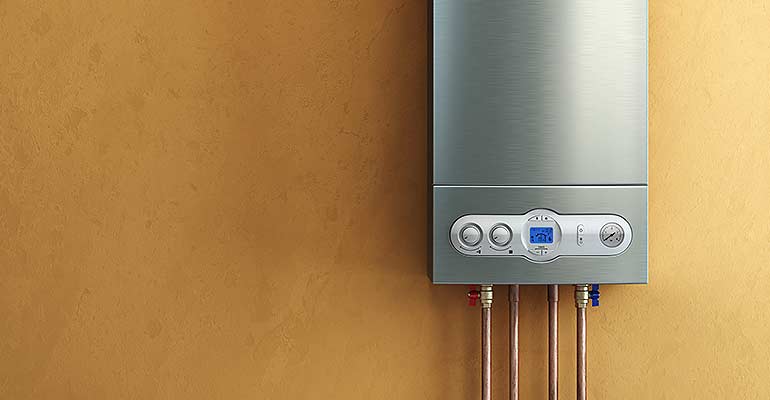On this page on the next paragraphs you can locate more very good material related to How to Maintain Your Water Heater & Prolong its Life.

Warm water is necessary for daily comfort, whether it's for a revitalizing shower or washing meals. To guarantee your hot water system runs successfully and lasts longer, routine upkeep is vital. This short article gives useful ideas and insights on exactly how to keep your home's warm water system to stay clear of disruptions and expensive fixings.
Introduction
Preserving your home's warm water system may appear difficult, yet with a few easy actions, you can guarantee it runs efficiently for several years to come. This guide covers every little thing from recognizing your hot water system to DIY upkeep tips and understanding when to call professional help.
Value of Keeping Your Warm Water System
Normal maintenance not just expands the life-span of your hot water system but likewise ensures it operates efficiently. Overlooking maintenance can result in reduced performance, greater power costs, and even premature failure of the system.
Indications Your Hot Water System Requirements Upkeep
Understanding when your warm water system requires focus can protect against significant concerns. Keep an eye out for indicators such as irregular water temperature level, unusual noises from the heating unit, or rustic water.
Flushing the Water Heater
Flushing your water heater removes debris build-up, enhancing effectiveness and extending its life.
Checking and Replacing Anode Rods
Anode rods protect against rust inside the container. Evaluating and replacing them when broken is critical.
Facility Problems Calling For Professional Help
Instances consist of significant leaks, electrical problems, or if your water heater is regularly underperforming.
Routine Specialist Upkeep Perks
Expert maintenance can consist of thorough inspections, tune-ups, and making certain conformity with security standards.
Evaluating and Changing Temperature Settings
Adjusting the temperature level settings ensures optimum performance and safety.
Do It Yourself Tips for Maintenance
You can perform numerous maintenance tasks on your own to keep your warm water system in top problem.
Checking for Leakages
On a regular basis examine pipes and connections for leakages, as these can cause water damage and greater costs.
Understanding Your Warm Water System
Before diving right into maintenance jobs, it's practical to understand the standard elements of your warm water system. Usually, this consists of the water heater itself, pipes, anode poles, and temperature level controls.
Monthly Maintenance Tasks
Regular regular monthly checks can aid catch minor problems before they intensify.
Examining Pressure Alleviation Valves
Testing the stress safety valve ensures it operates correctly and stops excessive pressure build-up.
Insulating Pipelines
Protecting warm water pipelines decreases warmth loss and can save energy.
When to Call a Specialist
While DIY upkeep is advantageous, some concerns require expert experience.
Conclusion
Regular upkeep of your home's warm water system is crucial for performance, durability, and expense financial savings. By adhering to these ideas and knowing when to seek specialist help, you can make sure a trustworthy supply of hot water without unexpected interruptions.
How to Maintain an Instant Hot Water Heater
Before tinkering with your hot water heater, make sure that it’s not powered on. You also have to turn off the main circuit breaker and shut off the main gas line to prevent accidents. Also turn off the water valves connected to your unit to prevent water from flowing into and out of the appliance. 2. When you’re done, you have to detach the purge valves’ caps. These look like the letter “T†and are situated on either side of the water valves. Doing so will release any pressure that has accumulated inside the valves while at the same time avoid hot water from shooting out and burning your skin. 3. When the purge valves’ caps are removed, you have to connect your hosing lines to the valves. Your unit should have come with three hoses but if it didn’t, you can purchase these things from any hardware or home repair shops. You can also get them from retail stores that sell water heating systems. Read the user’s manual and follow it to complete this task properly. When the hosing lines are connected, open the purge port’s valves. 4. You should never use harsh chemical cleaners or solutions when cleaning your unit. Make use of white vinegar instead. It should be undiluted and you’ll probably use about 2 gallons. 5. Now flush your water heater. This task should probably take about 40 minutes. We can’t give you specific directions for this because the procedure is carried out depending on the type, model and brand of your heater. With that being said, refer to the user’s manual. 6. When you’re done draining the unit, you have to turn off the purge port valves again. Remove the hosing lines that you earlier installed on each of the water valves. Put the valve caps (purge port) back in their respective places and be very careful so as not to damage the rubber discs that are found inside these caps. 7. Now that everything’s back in place, check your user’s manual again to find out how to reactivate your water heating system. 8. Once it is working, turn one of your hot water faucets on just to let air pass through the heater’s water supply pipes. Leave the tap on until water flows smoothly out of it. https://www.orrplumbing.com/blog/2014/september/how-to-maintain-an-instant-hot-water-heater/

As an enthusiastic reader on How to Maintain a Hot Water Heater in a Few Simple Steps, I thought sharing that excerpt was really useful. In case you enjoyed our page kindly don't forget to share it. I enjoy your readership.
Click Here